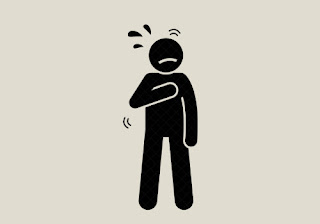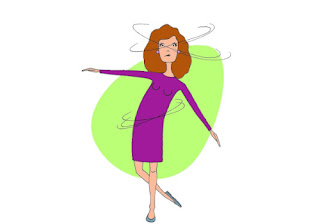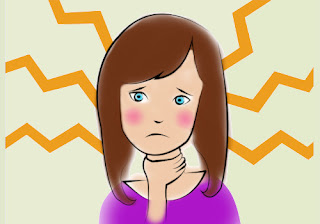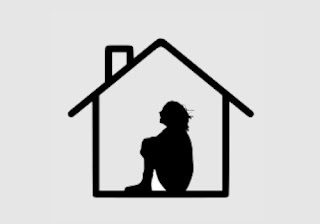11 Signs and Symptoms of an Anxiety Attack Disorder

Are you looking for signs and symptoms of an anxiety attack disorder? A higher level of anxiety or panic attack can trigger one anytime, anywhere. You can find yourself helpless, and you may feel a nervous breakdown that may frighten you intensely.
In today’s time, millions of people are going through anxiety disorder or panic attacks, and many of them have no idea what is happening. You may feel increased heart rate, palpitations, chest pain, nausea, breathlessness, and perception like you may die from a panic attack.
A panic attack can last 10 to 15 minutes, and in some cases, it can reach 20 to 30 minutes, and in rare conditions, it can peak near about 60 minutes.
The victim may feel extreme fear and anxiety, and it leaves quite a negative impact on the body and mind.
In this article, we are listing signs and symptoms of an anxiety attack disorder and some excellent ways to prevent them so the whole information can be helpful for you because if you can recognize the disease or disorder, you can treat yourself well, so let’s take a closer look at that:-
We’re going to Read
- Signs and Symptoms of an Anxiety Attack Disorder
- How to Prevent Symptoms of an Anxiety Attack Disorder
Signs and Symptoms of an Anxiety Attack Disorder

1. Extreme Fear of Dying
Fear is the common sign of an anxiety attack, and you may feel the peak level of fear as you are going to die now. It happens due to the increased level of adrenaline hormone in the body. It prepares you to fight a dangerous situation.
And the higher level of adrenaline makes you feel afraid and extreme terror or impending doom.
2. Sweating
We sweat more when we are afraid or in danger. You sweat more while having a panic attack, and it is natural as you are in terror.
3. Pain in the Chest

Most people feel pain in the chest that is considered a heart attack, and then they feel much fear of dying. The situation can also affect blood pressure.
An anxiety attack can be responsible for chest pain or choking experience.
4. Breathlessness
While you face a panic attack, you may feel difficulty breathing or short breath, and you have to put a lot of effort while breathing properly, which is also a major sign of a panic attack. The condition is also known as hyperventilation.
Your body needs more oxygen, but it has carbon dioxide. That’s why you feel discomfort in breathing.
5. Trembling
Most people feel trembling and shaking in the feet, hands, and sometimes in the whole body due to extreme fear of dying, or something very bad can happen with them.
6. Dizziness or Cramps in the Stomach

If you feel dizziness or nausea or the place or room is spinning rapidly, it can be a panic attack. You may also feel cramps in the stomach due to fear. The extreme level of a panic attack can make you feel faint, have stomach cramps, and have weakness in the body.
Your brain works naturally as it has no idea what is happening with the body and works like a fight-to-fight technique.
7. You Feel Like you are Mad
When you lose control over your body and mind, you may feel gone crazy or feel detached or disconnected from your surroundings. The overwhelming fear and negative feelings drive you in such a weird situation that you never felt before.
Your brain may feel unfocused, and brain fog is also a common sign.
8. Increased Heart Rate

When you have a panic attack, your body reacts to protect you and reveals such hormones. The increased heartbeat or pounding heart is also a prior sign of an anxiety attack.
9. Numbness in Hands and Feet
Just like trembling, numbness is also related to a panic attack. You feel numbness with shaking during the attack due to heightened terror.
10. Chills and Hot Flashes
When your body feels such anger or fears, you may feel increased or decreased temperature or chills or hot flashes. It depends from person to person. A panic attack affects the bloodstream so that you may feel both.
11. Discomfort in the Throat

People feel discomfort or tightness in the throat when they experience a panic attack. You may feel difficulty in gulping or drinking anything.
How to Prevent Symptoms of an Anxiety Attack Disorder

1. Do Stretching Exercises
Whether you have panic attacks or not, you must do stretching exercises that will prevent you for sure. There are many excellent exercises available, and Surya Namaskar is one of the prominent among them.
Spare some time for yourself and do stretching exercise roguery. It not just prevent you from panic attacks but also have several other benefits too.
2. Do Breathing Exercise
Breathing exercise is like a panacea to calm up the brain that also controls overthinking. Focus on deep and long breathing that touches the navel. Focus well on breathing and make it slow, long, and deep, for 10 to 20 minutes twice a day.
3. Drink Plenty of Water
Drink plenty of water in a day, especially when you face a panic attack; drink some cold water slowly, sit down, sip slightly, and try to calm yourself.
4. Meditation
Mediation can be beneficial for those facing the worst period adding depression, stress, anxiety, and panic attacks.
You can quickly learn meditation via YouTube or any expert.
5. Listen to Good Music
Listening to some healing music can also help you instantly. Listen calmly whatever you like; you can also read inspirational stories that can boost the mind and help you to tackle the situation.
6. Shake Hands with Nature
Nature is always with us to help and heal. Spend some time with nature and feel more connected with trees, flowers, rivers, clouds, sky, sun, and moon. It may sound weird, but it works and is far better than connecting with fake people.
7. No Matter what, Stay positive
The great legends always stated, nothing stays permanently in this world. Don’t bother your mind much by thinking about the things that are not related to you. Try to stay positive because the situation will change soon.
8. Help the Needy
Helping somebody makes you feel good and positive, and there are people everywhere who need help.
Trusted Sources
- What is Anxiety Disorder[1]
- Panic disorder: a review of DSM-IV panic disorder[2]
- Relaxation Techniques: what you need to know[3]
- The neuroscience of mindfulness meditation[4]
- The Diagnosis and Treatment of Anxiety Disorders[5]
- Epidemiology of anxiety disorders in the 21st century[6]
- Anxiety – American Psychological Association[7]





